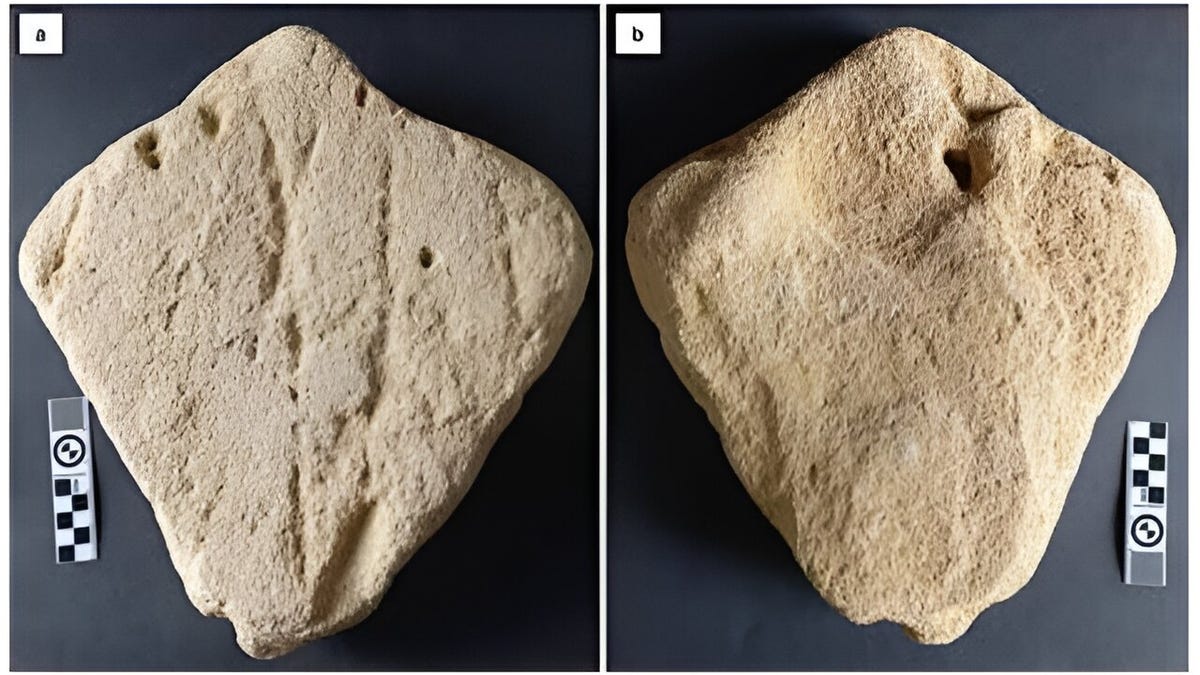
A hunk of rock found on the South African coast may be the oldest human artwork representing another animal, according to a team of researchers that examined the stone.
The aeolianite rock was found east of Still Bay, about 205 miles (330 kilometers) from Cape Town. Based on its symmetry and the grooves on its surface, the researchers posit that the rock may be a human-made representation of a blue stingray (D. chrysonota), which is native to the area. The team’s cautious conclusion was published in Rock Art Research.
Advertisement
Study co-authors Charles Helm, a paleontologist at Nelson Mandela University, and Alan Whitfield, the Emeritus Chief Scientist at the South African Institute for Aquatic Biodiversity, wrote in The Conversation that their conclusions are “highly informed speculation based on our understanding of many tens of thousands of such rocks.”
Advertisement
The team posits that the stone may be an ammoglyph: a tracing made in sand that has since turned to stone. The stone is kite-shaped, with grooves on one side that are close to symmetrical. The base of the stone is stubbed, which the team postulated may mark where a “tail” on the stingray may have been ceremonially removed. The stone was found on a beach, further supporting the possibility that the sculpture was traced based on a fresh specimen.
Advertisement
“Symmetry is always intriguing, and can have a number of origins, only one of which is human,” Helm and Whitfield wrote. “But it always begs for an explanation, and such multiple levels of symmetry support a hominin origin: the possibility that the combination of multiple symmetrical features is due to chance alone is, in our view, remote.”
Directly dating the stone would damage it, the researchers said, but optically stimulated luminescence dating of nearby rocks suggest that the apparent artwork was made about 130,000 years ago.
Advertisement
For reference, the oldest certifiable artwork of animals—a painting of a warty pig in an Indonesian cave—was dated to 43,900 years ago. The oldest depictions of hunting date to around the same time, and though older artwork of animals exists, it was most likely created by Neanderthals. The Lion-Man sculpture, a 40,000-year-old figurine carved from mammoth ivory and discovered in the Hohlenstein-Stadel cave in Germany, is believed to be the oldest-known depiction of an animal—albeit a mythical human-lion hybrid. The stingray sand sculpture presented by the recent team blows the known dates for human representations of animals out of the water.
It’s worth noting that 200,000-year-old hand- and footprints were found near a hot spring in the Tibetan Plateau in 2021, but as we reported at the time, the prints may not have been made by Homo sapiens. However, a researcher unaffiliated with the paper said that based on the “deliberate care” with which the prints were made, they could be defined as art.
Advertisement
The conclusions are tenuous, and to the untrained eye, the purported stingray sand sculpture looks like an ordinary rock. But it may—just may—hold a coveted position in our species’ cultural history.
More: Largest Cave Art in North America Discovered in Alabama
Services Marketplace – Listings, Bookings & Reviews